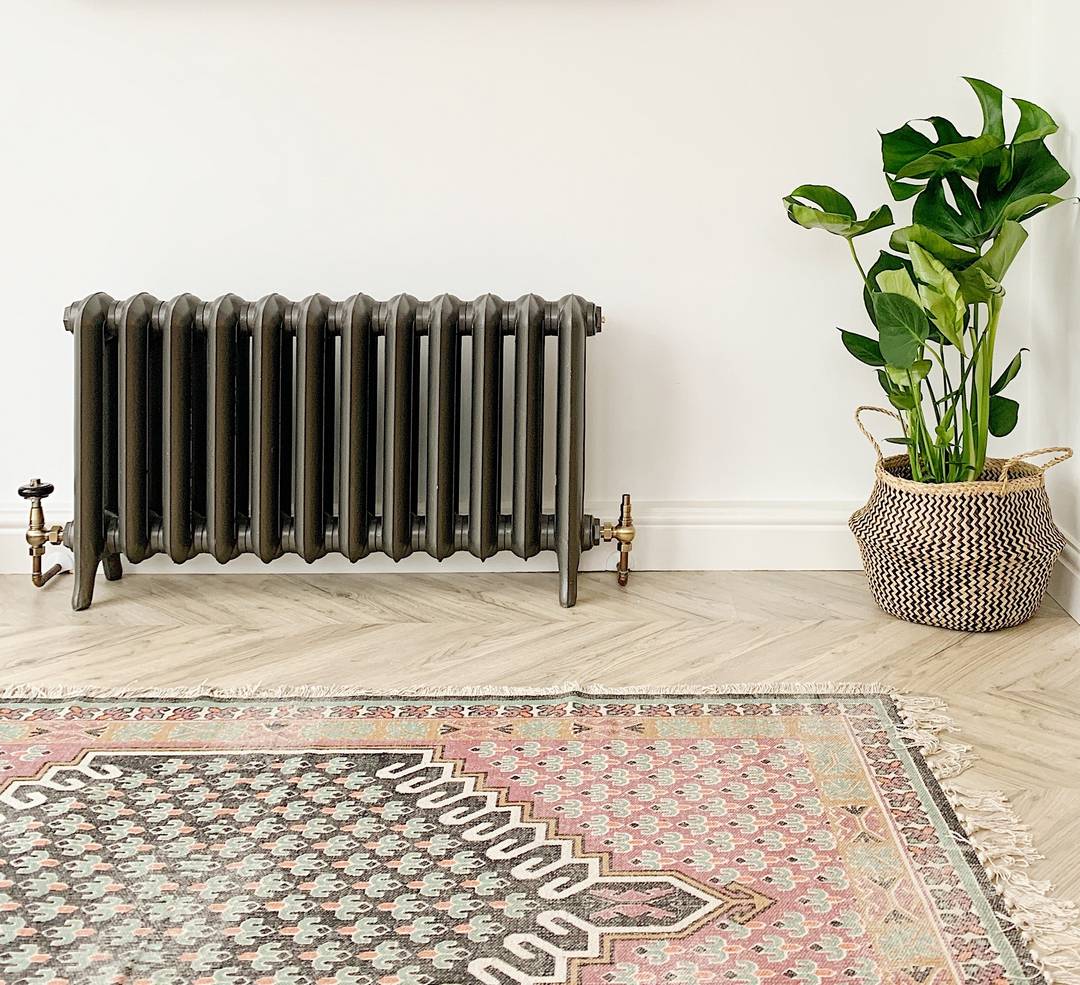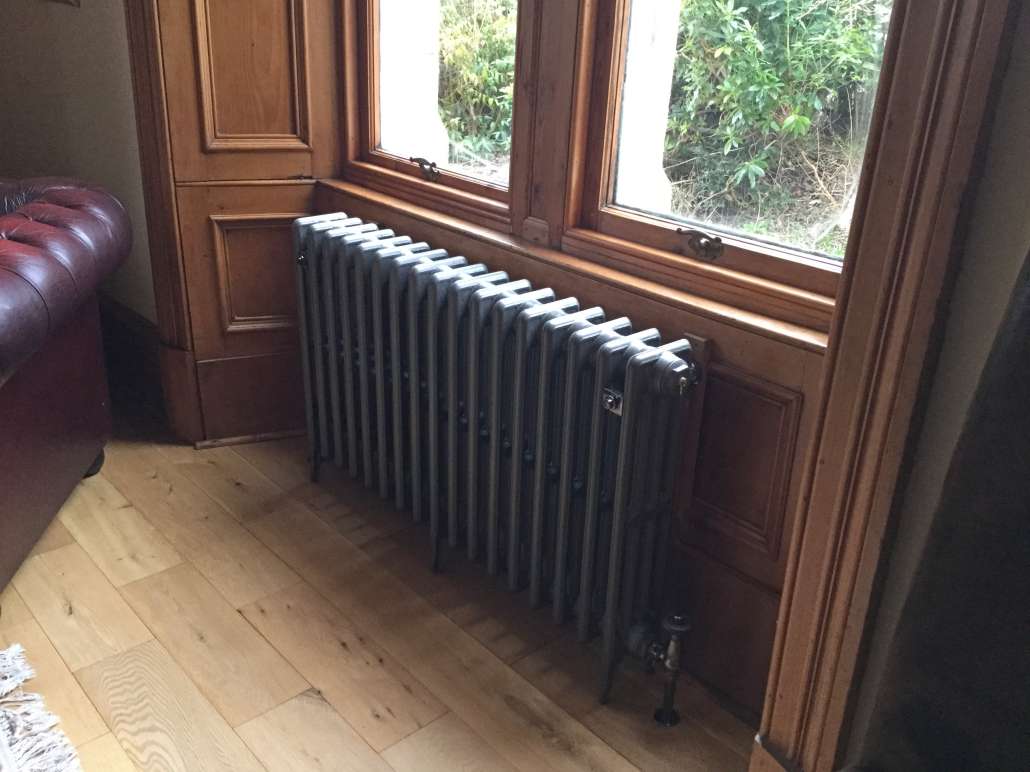When choosing radiators for your home, size matters. Most people assume that radiators are chosen to fit the wall space available, but this isn't always the case. When you're making the switch from modern panel radiators to traditional cast iron radiators, it will be more important than ever before to pay close attention to the radiator sizes and the heat output required.
If you choose a radiator too small, it won't be enough to heat the space and you can never increase its output. On the other hand, if you have to choose a radiator that is slightly oversized due to the location of your pipes, you'll have the option to control the output with thermostatic valves.
Thankfully, there is a way to determine the ideal radiator size for your needs.
Cast iron radiators come in a range of heights, depths and widths. Our traditional four-column radiator offers the most versatility in terms of sizing. First, you can choose your height and depth, according to the space available. You can then choose how many sections you need to achieve the right level of heat output required to adequately keep your chosen room nice and toasty.

These are some of the things you will need to think about when choosing the correct cast iron radiator dimensions for your home:
Before you fall in love with a particular style or design, we recommend calculating the BTU or kW requirements for your room. Most will have heard of kWs, but those who haven't heard of BTUs before, this stands for British Thermal Unit and it is a measurement of how much energy is required to raise one pound of water by one degree Fahrenheit. Today, we can use either to calculate the heating output required to warm a room.
To calculate the required heat output for your radiator, you will need the dimensions of the room. Our BTU calculator also asks questions about other features in the room, such as the types of glazing, number of outside walls etc. Once you know the BTU requirements for the room, you can then choose the number of radiator sections you will need.
This is where you can get a bit creative. For example, if you have a very large room with a high BTU requirement, you might need to get creative. Imagine you don't have the wall space for a longer radiator, but you do have a large bay window. You could choose the shorter 460mm column radiator which could stand below the windows where furniture won't be placed. You can then pair these with the taller column radiators which won't then take up so much wall space.

In large or open plan rooms, it is sensible to space your radiators evenly so you do not create cold spots. Having one large radiator at one end can create cooler areas at the opposite end. Remember that heat rises and will move along the ceiling and as it cools will begin to drop making that part of your room feel cooler. If possible, try to place your radiators around your room to ensure the heat outputs are spread more evenly.
If your BTU requirements are between radiator sections and you have high ceilings, we would recommend choosing a size up to help it feel more comfortable.
Before installing cast iron radiators, you should consult with a plumber to confirm if your existing heating system can support the new radiators. Boilers have different heat output capabilities, so if you aren't sure if your heating system can keep up, we recommend consulting with a professional.
If you are trying to be as energy efficient as possible and have switched to a heat pump heating system, the good news is that these work well alongside cast iron radiators. A heat pump will produce heat more efficiently, but at a lower temperature. Therefore, you may need more sections to achieve the desired BTU output, but once the cast iron radiators are up to temperature, they do retain the heat in the cast iron for longer.
With modern panel radiators, you typically only need to think about the wall space. Since traditional cast iron radiators are self-standing, you'll also need to consider the floor space. Rather than thinking about your radiators as a utility, we prefer to see them as a piece of furniture.
Our 9-column radiators in particular are incredibly visually striking in a room, creating a focal point that celebrates the period features of a home. Place these radiators in front of a low sash window for the ultimate visual impact, and to avoid wasting premium wall or floor space.
Still have questions about choosing the right sized radiator? We've answered the most common radiator sizing questions below?
We wouldn't recommend it. We often hear from homeowners who want to know if they can choose a smaller radiator because they have another heat source in the room, such as a wood-burning stove. This is generally a bad idea because it doesn't offer the same convenience that comes from being able to heat up a room at the touch of a button.
Imagine you've been out all day and are coming home to a chilly house. You'll have to build a fire, let it get established and then eventually you'll have enough heat for the room. Wood-burning stoves typically have an incredibly high BTU output, so you won't need a radiator alongside this. It will always be an either/or situation.
With this in mind, you should always choose a radiator size that is capable of heating the room on its own. A smaller radiator won't take the edge off a chilly winter's day on its own.
If your BTU requirements are between radiator section sizes, there are some instances when you would want to go for the oversized choice. Rooms with high ceilings or a staircase will benefit from a higher BTU output.
If your goal is to be energy efficient, we recommend choosing the radiator size that is the closest match to your BTU requirements. This will allow you to avoid overheating the room and wasting energy by opening windows to cool down.
If you do order radiators that are too large for the room or for your heating requirements, we recommend pairing these with thermostatic valves (TRVs) which will allow you to control the temperature more easily. With a manual valve, the radiator is either on or off. But with a thermostatic valve, the water flow to the radiator will switch off when the desired temperature has been reached. These valves are a lot more efficient as well.
Join our mailing list
1 5% discount on orders over £2,000 before delivery & VAT
2 Ten year guarantee on all radiators excluding clearance



